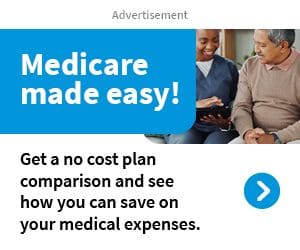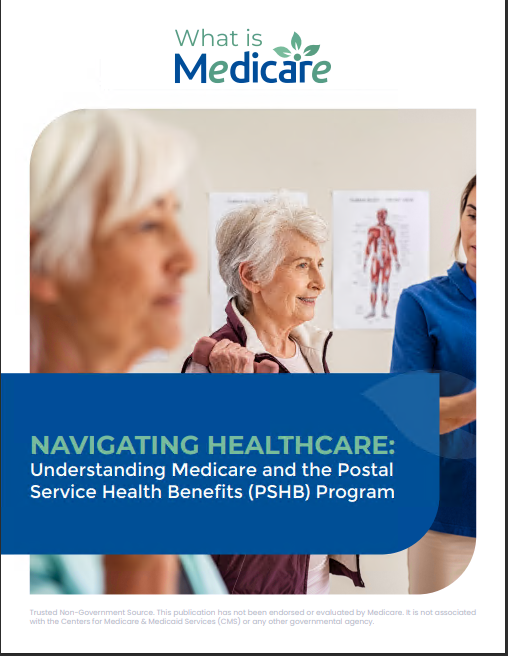Key Takeaways:
- New changes to Medicare Part D in 2024 and 2025 introduce critical caps on out-of-pocket costs, easing the financial burden for millions of Americans managing high prescription drug expenses.
- The $2,000 out-of-pocket spending cap in 2025 is a significant milestone, offering enhanced affordability and security for those reliant on costly medications.
Struggling with Prescription Drug Costs? Here’s How Medicare Part D Could Be the Solution You Need
As prescription drug prices continue to rise, many Americans find themselves struggling to afford the medications they need. For those enrolled in Medicare, managing these costs can be particularly challenging, especially for individuals on fixed incomes or those requiring long-term, costly treatments. However, recent changes to Medicare Part D offer a potential solution to these financial challenges, providing beneficiaries with more predictable and manageable drug costs.
Understanding Medicare Part D
Medicare Part D is a prescription drug coverage plan available to anyone enrolled in Medicare. Introduced in 2006, this optional plan is provided by private insurance companies approved by Medicare and is designed to help cover the costs of both generic and brand-name prescription drugs. Each Part D plan has its own list of covered drugs (formulary) and is structured with specific cost-sharing phases, including deductibles, copayments, and coinsurance.
Key Features of Medicare Part D
Medicare Part D operates through several cost-sharing phases, each impacting how much you pay for your medications:
-
Deductible Phase: Initially, you pay the full cost of your medications until you meet your plan’s annual deductible. This amount varies depending on your specific plan.
-
Initial Coverage Phase: After meeting the deductible, you pay a copayment or coinsurance for your medications. Your plan covers the rest of the costs up to a certain limit.
-
Coverage Gap (Donut Hole): Once your total drug costs (including what you and your plan have paid) reach a certain threshold, you enter the coverage gap. During this phase, you might pay a higher percentage of drug costs, although recent changes have significantly reduced these out-of-pocket expenses.
-
Catastrophic Coverage: After your out-of-pocket expenses reach a specific limit, you enter catastrophic coverage, where you pay a small coinsurance or copayment for the remainder of the year.
Recent Changes to Medicare Part D: What You Need to Know
In response to the growing financial burden of prescription drugs, the U.S. government has implemented significant changes to Medicare Part D through the Inflation Reduction Act. These changes aim to lower costs and provide greater financial protection for beneficiaries.
Elimination of the Coverage Gap
The coverage gap, often referred to as the “donut hole,” has historically been a significant source of concern for Medicare beneficiaries. When in the gap, individuals faced higher out-of-pocket costs after a certain spending threshold was reached. However, with recent reforms, this gap has been effectively closed as of 2024. This means beneficiaries will now pay the same copayment or coinsurance amount during the gap as they did before, without a sudden increase in costs.
Caps on Out-of-Pocket Spending
A major highlight of the recent reforms is the introduction of caps on out-of-pocket spending. In 2024, Medicare Part D enrollees will no longer be required to pay the 5% coinsurance after reaching the catastrophic coverage threshold. This change effectively caps out-of-pocket costs at approximately $3,250 for the year.
Furthermore, starting in 2025, a significant milestone will be reached with the introduction of a $2,000 annual cap on out-of-pocket spending for prescription drugs. Once you spend $2,000 out-of-pocket in a year, you will not have to pay anything more for your medications for the remainder of the year. This cap will apply to all Medicare Part D enrollees, providing much-needed financial relief, particularly for those managing chronic illnesses that require expensive medications.
Who Benefits the Most from These Changes?
These changes are designed to benefit all Medicare Part D enrollees, but they will be particularly impactful for those with chronic conditions requiring expensive medications. Individuals dealing with diseases such as cancer, multiple sclerosis, and rheumatoid arthritis often face staggering drug costs that can reach thousands of dollars each year. The new out-of-pocket caps will provide significant financial relief, allowing these individuals to afford their medications without fear of exhausting their savings.
The Impact of the Inflation Reduction Act
The Inflation Reduction Act has been a key driver of these changes, representing a significant shift in U.S. healthcare policy aimed at reducing the financial burden of prescription drugs on Medicare beneficiaries. By capping out-of-pocket costs and allowing Medicare to negotiate drug prices directly with manufacturers, the Act is expected to lead to more affordable medications and increased predictability in drug costs.
While the $2,000 cap set to begin in 2025 is a major improvement, the Act also includes provisions that will help keep drug prices in check. These measures are expected to provide ongoing financial protection for Medicare recipients, ensuring that medication costs do not become a barrier to accessing necessary treatments.
Preparing for the Future: What Beneficiaries Should Do
As these changes roll out, it is important for Medicare Part D enrollees to stay informed and take proactive steps to manage their prescription drug costs:
-
Review Your Plan Annually: Each year, during the open enrollment period, review your current Part D plan to ensure it still meets your needs. Consider changes in drug coverage, costs, and new benefits introduced by recent reforms.
-
Consider Your Medication Needs: If you require expensive or multiple medications, explore Part D plans that offer better coverage or savings for your specific drugs. Plans can vary widely, so compare options carefully.
-
Stay Informed About Changes: Medicare rules and coverage options can change. Keep up with the latest news to understand how these changes may impact your coverage and out-of-pocket costs.
-
Budget for Out-of-Pocket Costs: Even with new caps, planning for out-of-pocket expenses is essential. Setting aside funds for these costs can help you manage your budget more effectively throughout the year.
Accessing Help and Resources
Understanding and navigating Medicare Part D can be complex, especially with ongoing changes. Several resources are available to help beneficiaries make informed decisions:
- Licensed Insurance Agents: These professionals can assist you in comparing different Part D plans and selecting the one that best fits your needs.
- Medicare.gov: The official Medicare website offers tools and resources, including a plan finder, to help you explore and compare coverage options.
- State Health Insurance Assistance Programs (SHIPs): These programs provide free, unbiased counseling to help you understand your Medicare options and choose the right plan.
Ensuring Affordable Access to Medications
The recent changes to Medicare Part D are a significant step forward in reducing the financial burden of prescription drugs for millions of Americans. The elimination of the coverage gap and the introduction of caps on out-of-pocket spending offer greater predictability and affordability for beneficiaries. As these changes take effect, it is crucial for Medicare recipients to stay informed and proactive in managing their healthcare costs to ensure they can access the medications they need without undue financial strain.
Contact Information:
Email: [email protected]
Phone: 7575553456










